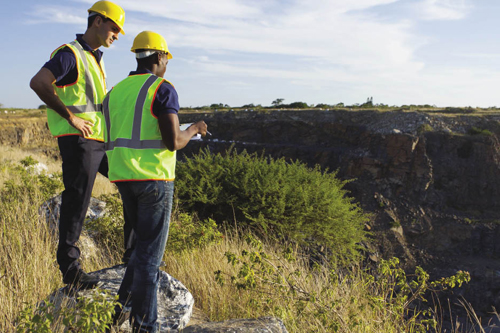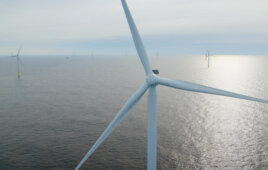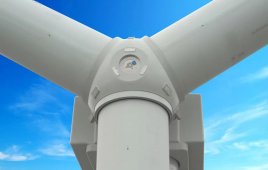Helen Tocco / Director / CohnReznick Think Energy / tocco@crthinkenergy.com
Selecting an appropriate site is key to the success of any renewable-energy project, financially and technically. This applies to every type of project, from the smallest residential systems to the largest utility-scale projects. It also applies to every renewable-energy technology, from wind to solar to biomass, and others. Selecting the proper site and designing a turbine array to fit it are vital to ensuring that wind farms perform as expected.
Site selection also plays a crucial role in the financial returns of the project, ease of construction, ongoing operations and maintenance, and overall safety. As you’d expect, an inappropriate site or ill-designed turbine array jeopardizes the project.

The most important consideration when siting a project is whether or not the site is physically appropriate for the technology.
Here are key questions all developers, consultants, property owners, financiers, and site hosts should consider.
How good is the wind resource on the site?
For onshore wind projects, identify the wind class, and whether it lines up with the cut-in speed and optimal wind speed for the proposed wind turbine. It is also important to evaluate whether nearby obstacles will cause turbulence to disrupt airflow access to the site and reduce turbine life. An industry rule of thumb: the distance between a turbine and the nearest obstacle should be at least twice the turbine height, unless the turbine is more than twice the height of the obstacle in which case the distance can be less. Although it may seem obvious, it is important to note that locations such as the bottom of a hill or inside a valley are not good sites for a wind turbine. The best locations in terms of wind resource are typically high on mountains, in large open fields, or on the edge of bodies of water.
It is also important to consider the level of wind shear on the proposed site. Offshore turbines in particular can experience a high amount of wind shear, so it is important to design an appropriate array that withstands extreme wind shear.
How much does electricity cost, and is there enough demand for the power?
Electricity rates are important to consider whether you are looking at a utility-scale or distributed-generation project. You might ask, “What do electricity rates have to do with site selection?” The answer: Quite a bit. For example, it is much harder to make a wind project pencil out financially in the Southeast U.S. than it is in California and the Northeast. Electricity rates are a major factor currently driving development in the Caribbean, as well. For the United States, the Energy Information Administration’s website posts estimates for electricity prices.
Who has site control?
It is extremely important to identify early on who has site control. If consultants and their clients do not have site control, it must be determined whether it is possible to buy or lease the site, or work out an arrangement with the site owner.
For example, CohnReznick Think Energy has worked with retail customers under long-term leases, and on the other side of the fence with real estate-investment trusts. In these cases, it is important to determine how the power from the wind farm is metered, who is obligated to purchase the power, and what happens to the asset at the end of the lease or if the host customer goes out of business.
If the project will be distributed generation, are asset owners under a direct-access contract that precludes onsite generation?
This is a key question often overlooked. If you are considering a distributed-generation project, make sure the site host does not have a direct-access contract with a third-party electricity supplier that disallows onsite generation. When a direct-access contract is in place that precludes onsite generation, it is sometimes possible to renegotiate the contract terms, in exchange for a slightly modified electric rate.
Are there other potential barriers based on utility rules?
Many utilities have requirements for a maximum system size that can interconnect to the grid or the maximum system size that may net meter to the grid, or both. Furthermore, how these limits are defined varies by state.
For example, some states limit net metering to 1 MW per address, while in others, net metering is limited by meter number. California allows ‘virtual net metering’ whereby certain types of entities, such as public schools, may transfer net metered credits from one site to another. It is important to read your utility and state’s rules to understand how net metering and the interconnection can affect your project.
Are there permitting, zoning, or other related barriers?
It is important to identify all local, regional, and national permits required for a proposed site. It may be helpful to identify what other projects have been built nearby, if any, and identify what permits they were required to obtain. For example, if a nearby project was halted due to the presence of an endangered animal or plant, the proposed site may face a similar challenge. Regional building codes and permits also vary. In the Northeast, for instance, wind-turbine sites must meet stringent snow-load requirements, while in California projects are required to meet extreme seismic requirements. When possible, for large wind projects, it may also be of value to determine whether it is possible to obtain an easement to ensure future structures nearby that would block the wind resource or cause turbulence, are not constructed.
Is the site physically able to accommodate the facility?
The most important consideration when siting a project is whether or not the site is physically appropriate for the technology. This can include, but is not limited to, considerations such as the amount of physical space required for the array and equipment (see the section on nearby obstructions, above), structural stability of the soil, slope and its direction on the site, and proximity to a nearby interconnection point. It is also important to note the current onsite vegetation and whether this will need pruning for construction and maintenance as part of the project O&M in the future.
Are there potential staging or access issues?
It is important to identify when and how construction will occur because these issues can have a significant impact on the cost of a project. Our firm recently worked on a project in the Caribbean where the best site in terms of wind resource for a wind turbine would be a cliff on the far eastern edge of the island. It was, however, quickly determined that no road exists to access the site, and while a helicopter lift of equipment would be possible, the only commercial helicopters available in the region were passenger helicopters ill-suited for heavy cargo. Furthermore, the location would make future operations and maintenance of the turbines difficult. For this particular project, the decision was made to locate the wind turbines closer to the developed portion of the island where the wind regime is not quite as good.
Does the site have security concerns?
It is worthwhile to check local news or police records for vandalism in the area. Additional site security may be an option, such as cameras, lighting, and fencing. However, it may be a financial burden to the project to install these additional security measures.
After considering the general site selection questions, there are technology-specific questions that also must be considered. As an example, here’s a brief checklist of the questions CohnReznick Think Energy typically considers (in addition to the previously listed items) when evaluating potential wind-energy sites.
- Is it necessary to build a road to the site?
- What are the required hours for construction and O&M?
- Are there access limitations to the site, such as it being locked during certain hours?
- Are there site operations that construction might hinder?
- Is there space for a staging area, which will most likely consist of a crane, construction trailers, dumpsters, various trucks, cement mixers, concrete pumps, and other equipment?
- Is there onsite access to electricity and water, or are a generator and water supply needed?
- How will workers access the site for future operations and maintenance?
While this lists is neither comprehensive nor exhaustive, it provides an overview of a few main items to consider at the start of site selection. Developers, consultants, property owners, financiers, and site hosts new to the wind industry will inevitably find site selection a learning experience. This introduction serves as a useful starting point for the process. WPE
Filed Under: Featured, Projects





Why isn’t there more development in South Ease Colorado? There is a some of the best wind in the US along the CO/KS line and there is a turbine in Springfield CO that produces the most energy in CO.